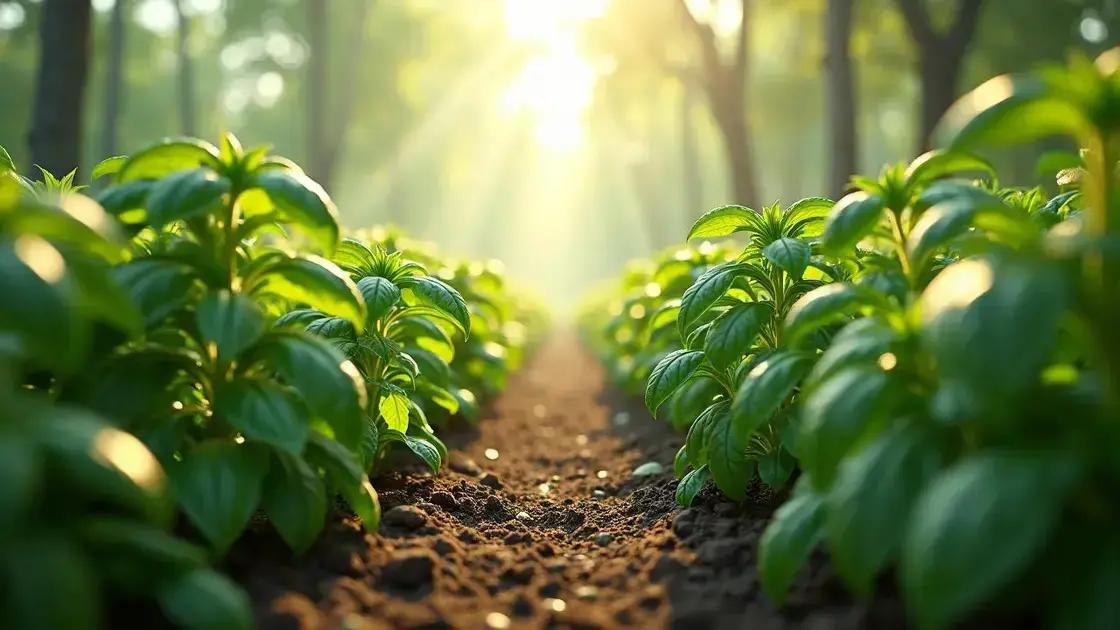How to Take Care of Basil Plants: 5 Essential Tips for Beginners
How to take care of basil plants can seem daunting, but once you grasp the essentials, your garden will flourish. Imagine fresh basil leaves at your fingertips, ready to enhance your culinary creations. This guide will unveil techniques to nurture your basil for bountiful harvests. Let’s dig into the key areas like watering, sunlight exposure, and soil requirements.
Table of Contents
ToggleUnderstanding basil’s ideal watering schedule
How to take care of basil plants involves understanding their unique watering needs. Proper hydration is crucial for healthy growth and flavor. Basil thrives in moist, well-drained soil, so it’s essential to follow a consistent watering schedule.
Key factors to consider
- Climate: Humidity and temperature play significant roles in how often you water your basil.
- Pot size: Larger pots retain moisture longer than smaller ones.
- Soil type: Well-draining soil helps prevent root rot.
Watering schedule tips
- Check moisture levels: Insert your finger about an inch into the soil. If it feels dry, it’s time to water.
- Water deeply: When you water, ensure you saturate the soil so that moisture reaches the roots.
- Adjust frequency: During hot weather, basil may need daily watering, while cooler days may require less frequent watering.
Signs of overwatering and underwatering
| Condition | Signs |
|---|---|
| Overwatering | Yellow leaves, root rot, and wilting despite wet soil. |
| Underwatering | Dry, wilted leaves, crispy edges, and slow growth. |
In conclusion, a proper watering schedule is vital for basil’s health. By regularly monitoring soil moisture and adjusting your watering habits, you can ensure your basil thrives. For those passionate about caring for plants indoors, consider exploring indoor gardening techniques to elevate your gardening skills further.
Optimal sunlight exposure for thriving basil plants

Optimal sunlight exposure for thriving basil plants is essential to their growth and flavor. Basil, a sun-loving herb, thrives with the right balance of sunlight, ensuring it stays vibrant and productive.
Understanding sunlight needs
- Basil prefers 6 to 8 hours of direct sunlight each day.
- Morning sunlight is ideal, as it warms the plant and helps prevent disease.
- Too much shade can lead to weak growth and less flavorful leaves.
Tips for providing optimal sunlight
- Placement: If growing indoors, position your basil near south-facing windows for maximum light.
- Rotate your pots: Regularly turn your basil plants to ensure even light exposure on all sides.
- Consider artificial lighting: For indoor growth, using full-spectrum grow lights can supplement natural sunlight.
Signs of inadequate sunlight
| Condition | Signs |
|---|---|
| Too little sunlight | Leggy growth, pale leaves, and slow development. |
| Too much sunlight | Scorched leaves, wilting, and browning edges. |
In conclusion, monitoring your basil’s sunlight exposure will be a key factor in its growth success. By ensuring it gets plenty of light, your basil will deliver exceptional flavors. For those interested in expanding their indoor gardening skills, consider exploring indoor gardening techniques that can further enhance your gardening experience.
Soil requirements and fertilization tips for basil
Soil requirements and fertilization tips for basil are crucial for successful plant growth. The right soil mixture can create an ideal environment, while the proper fertilization ensures your basil plants stay healthy and productive.
Essential soil characteristics
- Well-draining: Basil thrives in soil that drains excess water effectively to prevent root rot.
- pH level: An ideal pH range for basil is between 6.0 and 7.0.
- Organic matter: Rich organic content helps retain moisture and provides essential nutrients.
Recommended soil mixtures
- Potting mix: A blend of peat moss, perlite, and compost creates a light mixture.
- Garden soil: Combine equal parts of garden soil, peat moss, and compost for outdoor planting.
- Container options: For pots, choose a high-quality organic potting mix to enhance growth.
Fertilization strategies
| Type of Fertilizer | Application Timing | Recommended Frequency |
|---|---|---|
| Slow-release fertilizers | At planting or every 6-8 weeks | Every 4-6 weeks during growing season |
| Liquid fertilizers | Every 4-6 weeks | As needed based on growth |
Providing the right soil and nutrition is vital for basil’s overall health. Remember to monitor your plants for signs of nutrient deficiencies, such as yellowing leaves or stunted growth. If you’re passionate about developing your gardening skills, consider exploring indoor gardening techniques to enrich your knowledge.
In conclusion
Taking care of basil plants is an enjoyable and rewarding experience that can enhance your culinary adventures. By following the essential tips on watering, sunlight exposure, soil requirements, and fertilization, you can cultivate vibrant, flavorful basil.
Whether you’re a beginner or an experienced gardener, paying attention to these details will ensure your plants thrive. Don’t hesitate to explore more resources and tips on enhancing your indoor garden for further guidance on optimally maintaining your green space.

